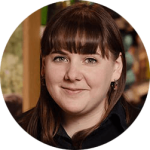Keeping Pets Safe in the Snow

The arrival of snow often has some mixed feelings here in the UK. Some love the way it transforms the countryside into a beautiful winter wonderland. Others despair over the cold, travel disruption and slippery pavements…
Regardless of how you personally feel about the snow, it is important to be aware of the dangers it can pose to our furry friends. Here are some top tips for keeping pets protected in winter weather.
1) Be Careful on Walks
Some dogs are born to run through snowy fields and seem to relish the cold. Even if your dog is a huge snow lover, it is important to exercise caution on walks.
• Keep a tight grip on your dog’s lead during snowy walks. Deep patches of snow can present a risk and cover up unsafe areas.
• NEVER let your dog walk on a frozen lake or pond. The ice may not be thick enough to take their weight and presents a huge danger.
• Keep your dog and yourself visible! It is essential to keep your dog safe and seen during the darker evenings. Invest in some Reflective or Glow in the Dark walk wear to help you keep a closer eye on your dog.
Pssst. Remember the ground can be a treacherous in winter, always wear sturdy waking boots or shoes.
• Whilst some dogs are built for snow, others are better suited to warmer conditions. Make sure your dog is wrapped up warm during the icy conditions.
For help finding the perfect winter dog coat, head over to your local Pets Corner for a free fitting service.
2) Wipe Down Paws
It is essential to keep pets’ paws, legs, and tummy free of snow and dirt. The grit from roads can easily irritate your pet’s skin and snow can build up between toes and cause matting.
After walking your dog or when your cat returns home after an adventure, give them a thorough wipe down. Microfibre towels are handy during winter for getting rid of the muck that comes with the snowy season.
3) Keep ID and Microchips up to Date!
Our dogs are required by law to wear a collar and an ID tag.
With darker days and nights, it is essential your dog has the relevant information on their tag. If your dog gets lost or goes for a walkabout, this makes it easier for you to be reunited.
When creating an ID tag, it must include the owners name and address. It is also strongly advised to include at least one phone number. Our Pets Corner stores offer Free Tag Engraving to make keeping your dog safe even easier.
Microchips are also required by law, and it can be easy to forget to update the details. Take this as a handy reminder to check that your pet’s microchip is showing the correct information.
Pssst. Did you know from June 2024 cats legally must be microchipped? Head over to the Government site to find out all the details.
4) Avoid Antifreeze!
Both dogs and cats are at risk of ingesting antifreeze during the winter months. This commonly used car product is extremely toxic to our pets.
Unfortunately, the taste of antifreeze can be enticing, meaning cats and dogs sometimes deliberately choose to ingest it.
To keep dogs safe, when around cars keep a close eye on surroundings and keep them on their lead.
If your cat has outside access, it can be harder to control what they eat. To help avoid ingestion, use alternative methods to clear ice from your own car. It is also worth keeping a close eye on cars around your home/ street.
Remember to always check your car for cats before you set off on a journey. Cats are known to find shelter on wheels and under the car. Give the bonnet a bang before you leave to wake up any napping felines!
5) Be Aware of Winter Weight Gain!
Much like us, our furry friends can eat more when it is snowy and cold. Combined with shorter dog walks and cats reluctant to venture outside, this can ultimately result in some winter weight gain.
According to the PDSA 2023 Paw Report, vets believe that obesity is one of the top welfare concerns facing dogs and cats. However, there are many things you can do to combat weight gain during times of lower activity:
• Weigh your pet regularly, this ensures you will notice those slight increases. For help with this, check out our Guide to Weighing Your Pet.
• Measure out your pet’s food daily or weekly (remember to account for any treats you give!). Weighing out food ensures you are giving the correct amount each day.
• Get your pet moving! If the weather conditions are frequently not allowing for outside play or walks, get your furry friend exercising inside instead. Cats can be tricky to motivate, so for quick tips read our Cat Weight Loss blog.
For dogs it is all about combining mental and physical enrichment. From scent games to hide and seek, there is plenty of fun to be had at home. For inspiration check out our blog on Fun Ways to Exercise Your Dog.
Hope you all have a safe, cosy and comfortable winter with your furry companions.


